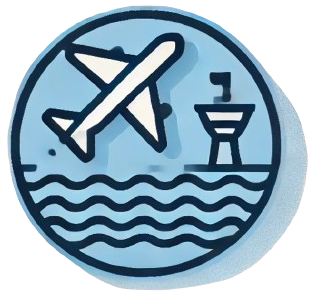Contrails: A Fascinating Phenomenon
Contrails, those white streaks that often crisscross the sky, are a fascinating phenomenon associated with modern air travel. While many are familiar with the sight of jets leaving these vapor trails behind, not everyone understands the conditions that lead to their formation or the types of aircraft responsible for them. This article explores the airplanes that leave contrails and the broader implications of these trails in our atmosphere.
Understanding Contrail Formation
Contrails are primarily formed by jet aircraft that operate at high altitudes, typically where the air temperature is significantly low. Aircraft such as airliners, business jets, and military planes commonly use turbofan and turbojet engines that are ideal for cruising at altitudes conducive to contrail formation. As these aircraft reach high cruising altitudes, the engines emit water vapor and other gases, which can freeze into tiny ice crystals when conditions are right, resulting in the visible streaks we see in the sky.
While contrails are most commonly associated with jet aircraft, it is also possible for propeller-driven planes to leave vapor trails, though this happens much less frequently. This is because prop planes usually fly at lower altitudes where the air tends to be warmer, thus making contrail formation less likely.
Aircraft Types Responsible for Contrail Formation:
- Jet Aircraft:
- Airliners
- Business jets
- Military planes
- Propeller-Driven Planes:
- Less common for contrail formation
The Environmental Impact of Contrails
The environmental implications of contrails have garnered attention in recent years. Contrails reflect sunlight during the day, which can lead to cooling effects, but they also have a warming impact at night. A recent study highlighted by aviation researchers indicates that, while contrails can temporarily cool the Earth, their overall contribution to global warming may be significant. The net effect of contrails could be two to three times that of the carbon dioxide emissions associated with aircraft operations.
This duality raises important questions about the environmental impact of aviation. As the aviation industry seeks to minimize its carbon footprint, understanding the role of contrails in climate change becomes increasingly vital. Pilots and airlines may often attempt to avoid flying through air conditions conducive to contrail formation, not only to reduce their carbon impact but also to address public concerns regarding the environmental effects of their flights.
| Aspect | Daytime Impact | Nighttime Impact |
|---|---|---|
| Cooling Effect | Reflects sunlight, reduces warming | Less significant cooling |
| Warming Effect | Minimal | Increases heat retention |
Contrails: A Mixed Blessing
While contrails contribute to scientific studies on climate change, they embody a broader conversation about the balance of modern convenience and environmental stewardship. The existence of contrails speaks to the technological marvels of our time – efficient and fast air travel that connects us across the globe. However, the implications of these trails suggest a responsibility to consider their impact on the planet.
In summary, the airplanes that leave contrails primarily include those powered by turbofan and turbojet engines operating at high altitudes. Understanding their formation and the environmental challenges they present is crucial for the future of aviation and its relationship to our climate. As travelers and consumers, we must be aware of the implications of our air travel choices and engage in the ongoing dialogue about sustainable practices in the aviation industry.
